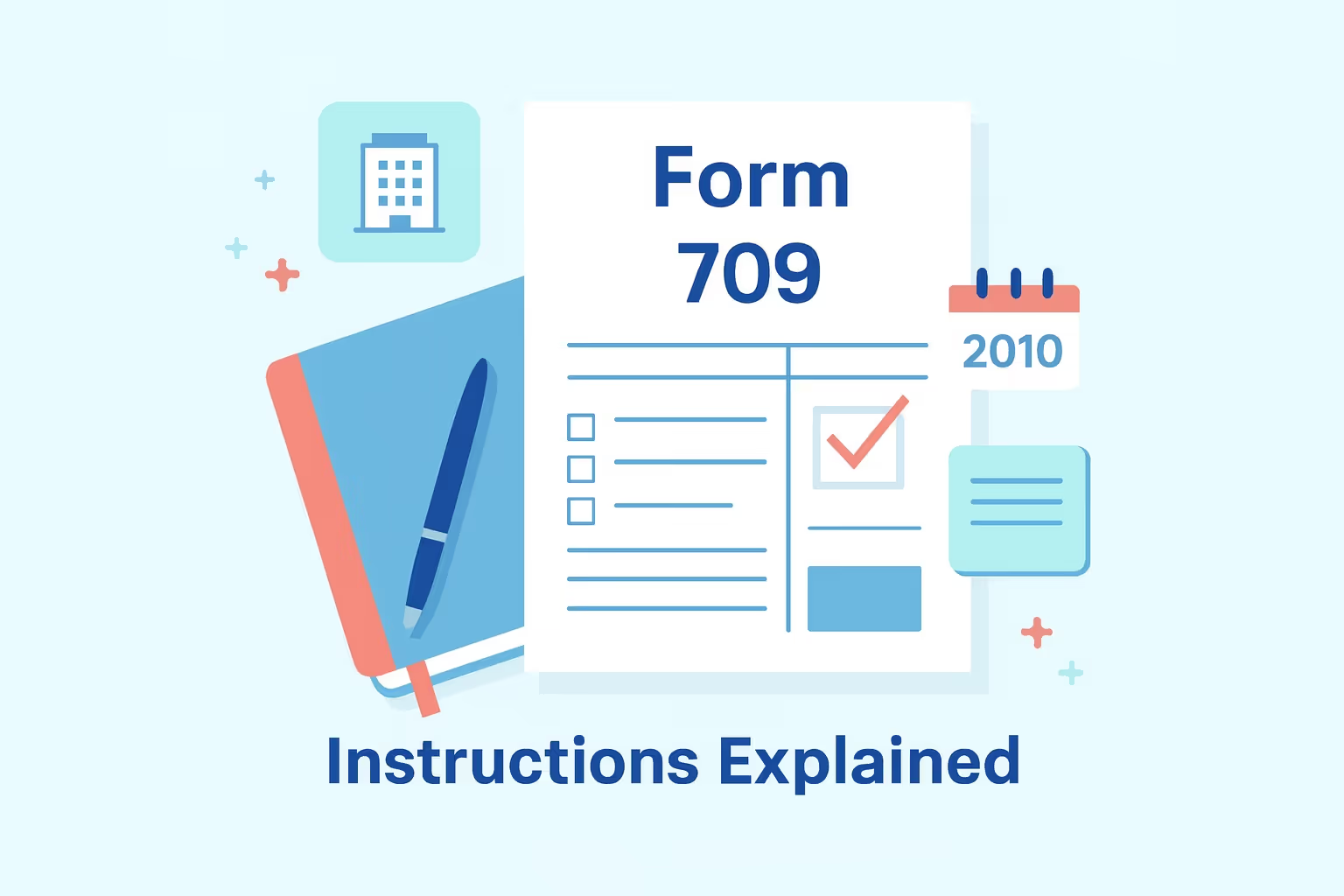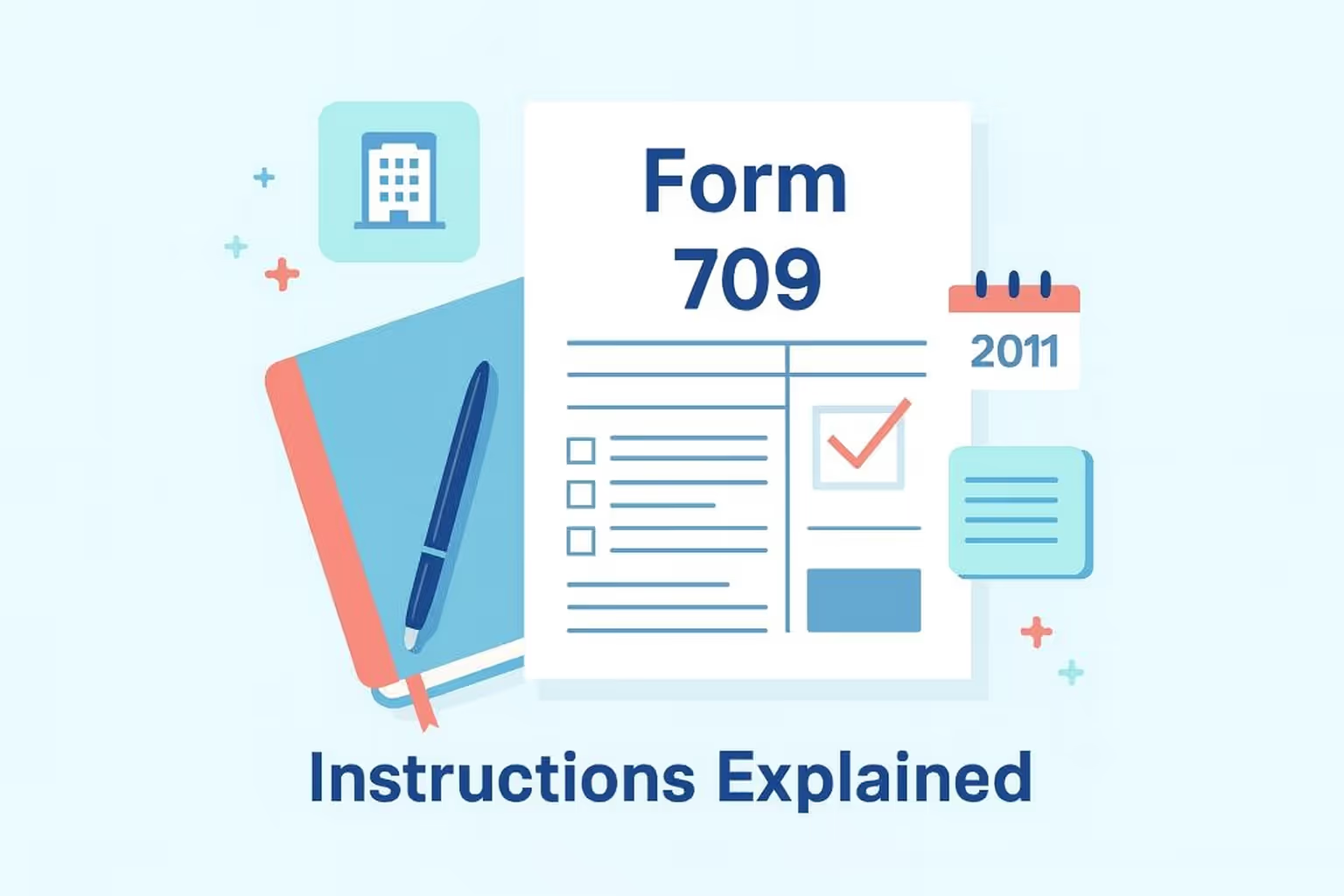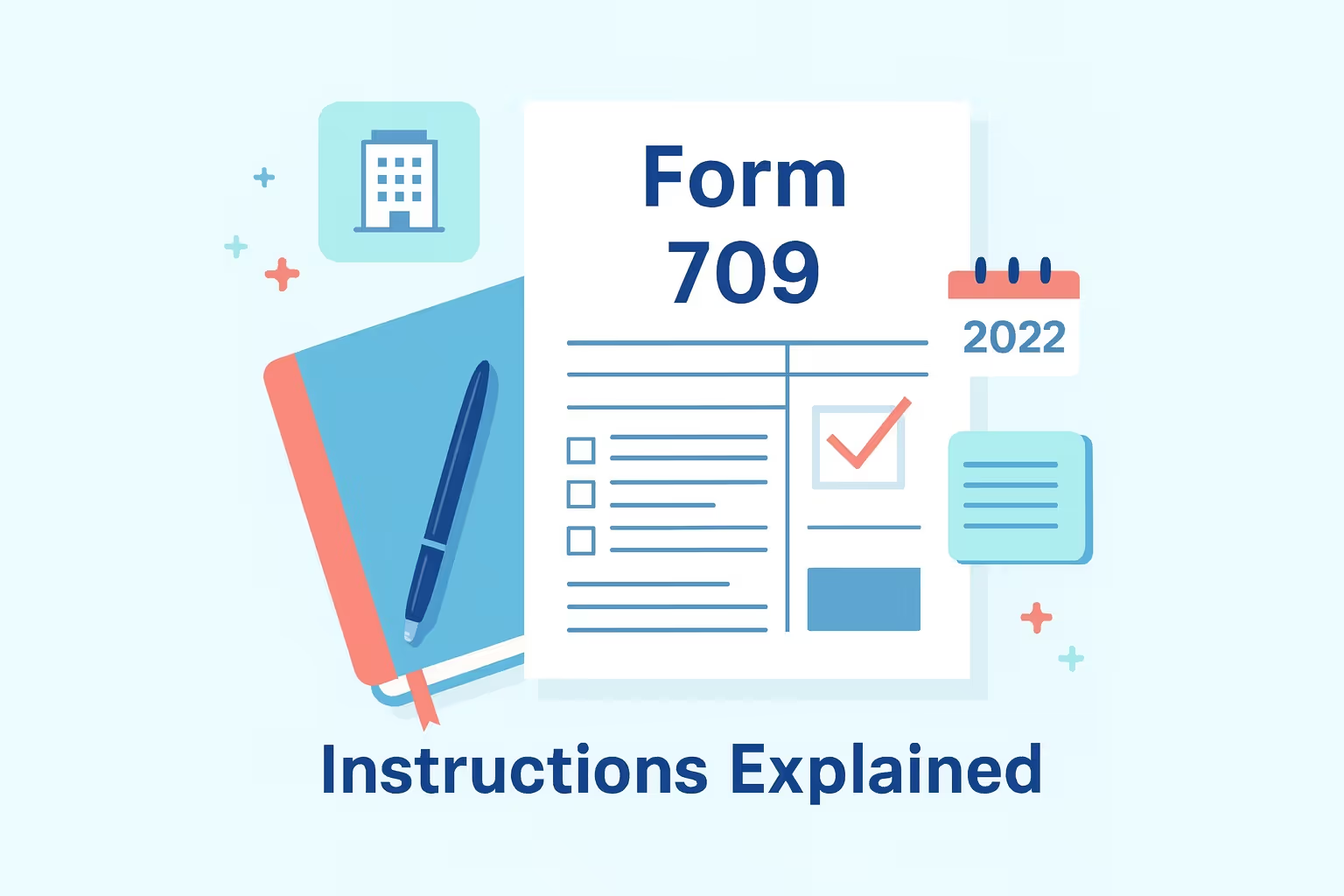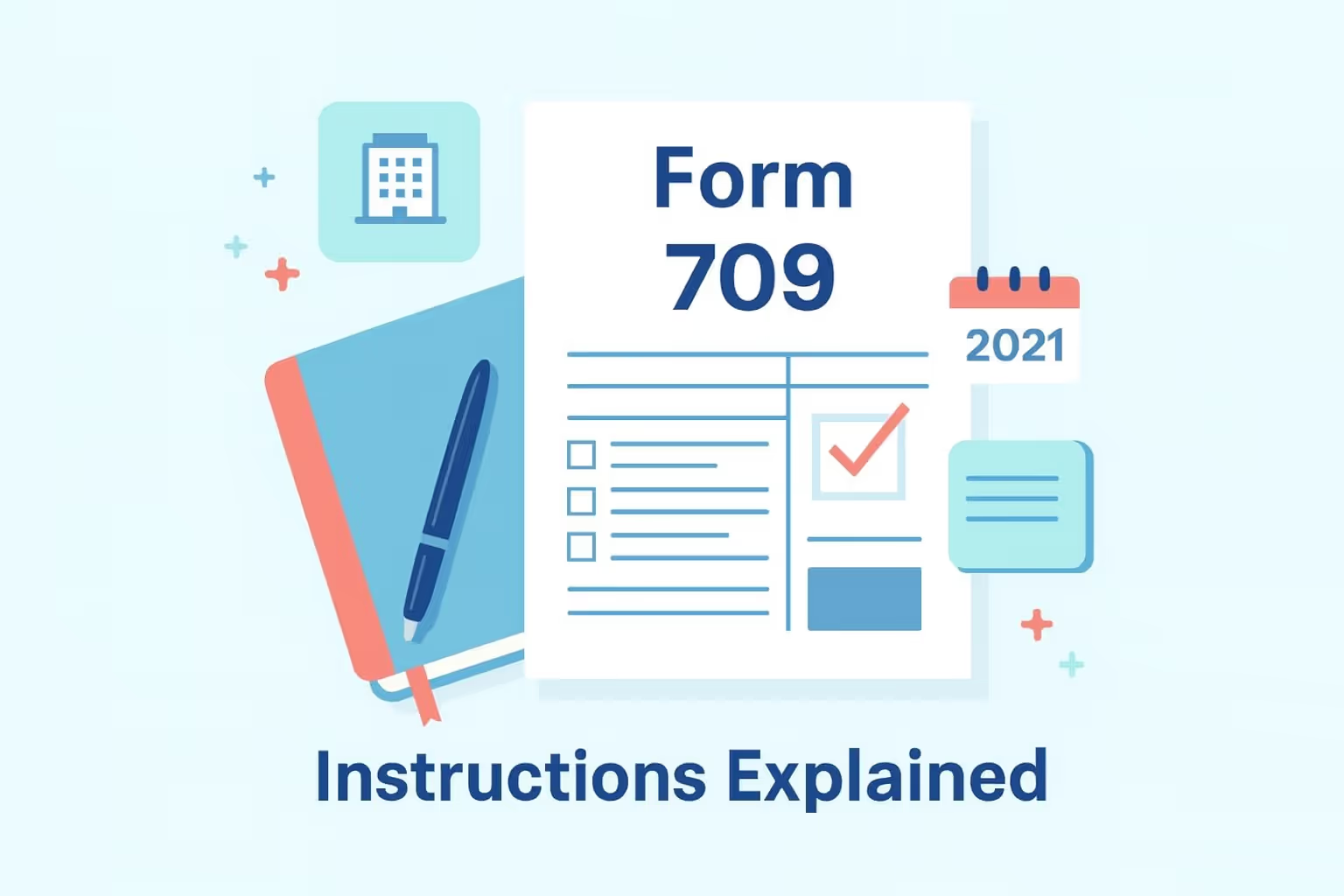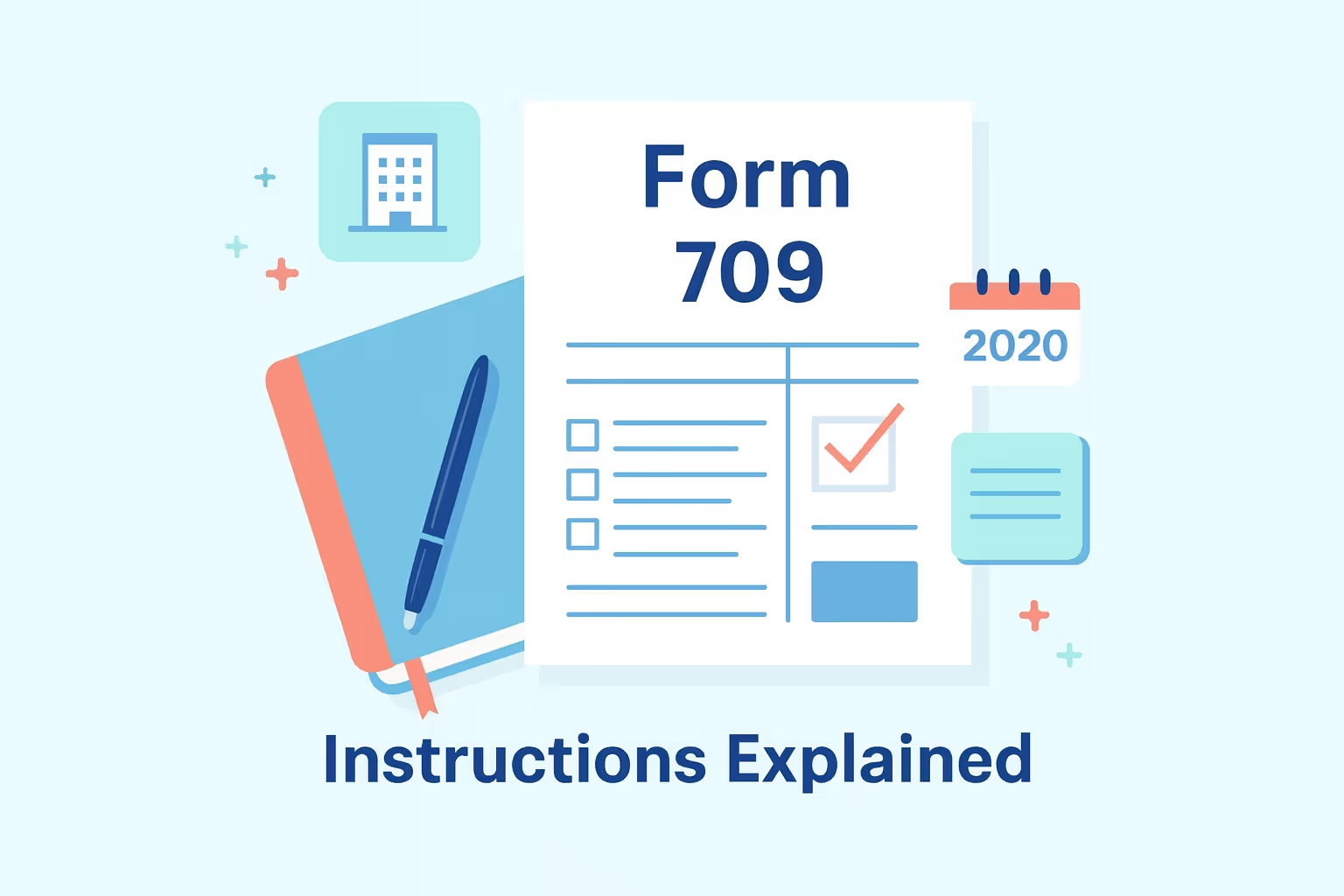Form 706 2010 Instructions: Estate Tax Filing Guide

Filing the United States Estate and Generation-Skipping Transfer Tax Return for decedents dying in 2010 involves specific provisions that differentiate it from prior years. The Job Creation Act temporarily reshaped estate tax rules, introducing a five-million-dollar filing threshold and an elective system that allowed executors to choose between the traditional estate tax method and the modified carryover basis. Executors and administrators managing a decedent’s estate must ensure every estate return is accurately completed, timely filed, and supported by comprehensive documentation reflecting the total value of the estate.
An executor must include all adjusted taxable gifts, property acquired, and other assets valued at fair market value on the decedent’s date of death. Typical holdings include bank accounts, insurance proceeds, real property, and closely held business interests. The Internal Revenue Service requires estates to present valuations and elections clearly to avoid delays in the processing of their returns. Executors preparing an estate return for 2010 should confirm whether a six-month extension is available through proper application when additional time is necessary to organize records or obtain professional appraisals.
Taxpayers can refer to Form 706 (2010), available on the official IRS page, to verify eligibility, elections, and filing requirements. This official resource provides essential details on schedules, filing instructions, and documentation standards. Reviewing the original form ensures accuracy, compliance, and consistency with IRS recordkeeping standards.
Understanding the Estate Tax Return and Filing Threshold
Preparing the United States Estate and Generation-Skipping Transfer Tax Return for decedents dying in 2010 requires a clear understanding of the filing threshold, valuation requirements, and eligibility criteria. Executors or administrators must determine whether the total value of the decedent’s estate meets the five-million-dollar threshold established under the Job Creation Act.
This figure includes all property interests, adjusted taxable gifts, and other assets subject to estate tax. Accurately identifying the estate’s components ensures compliance and prevents potential delays during the review of the estate return.
The filing threshold determines whether an executor is required to complete and submit Form 706. The Internal Revenue Service requires executors to include the fair market value of all assets owned at the decedent’s date of death. The return must include all tangible and intangible property located within the United States and any property acquired through inheritance or joint ownership, when applicable.
Executors should maintain comprehensive records to support valuations, deductions, and elections, particularly for assets held across multiple states or accounts, ensuring consistent and accurate reporting. Properly valuing the estate protects beneficiaries and ensures precise calculation of the tax owed, if any.
Executors preparing the estate return should include the following key asset categories when assessing the total value of the decedent’s estate:
- Real property, including primary residences, investment properties, and vacant land, is evaluated at its fair market value.
- Personal property, including vehicles, artwork, collectibles, jewelry, or household furnishings, is subject to appraisal.
- Financial accounts encompass bank accounts, certificates of deposit, and brokerage holdings.
- Life insurance proceeds are payable to the estate or beneficiary upon the decedent’s death.
- Business interests in corporations, partnerships, or sole proprietorships require professional valuation.
- Retirement accounts and annuities report income or distributions payable to heirs.
- Adjusted taxable gifts made during the decedent’s lifetime that exceeded annual exclusion limits are included.
Executors must document each component’s fair market value as of the decedent’s date of death using appraisals, financial statements, or closing records. Executors must also include property subject to mortgages, liens, or encumbrances influencing the estate’s total value.
Maintaining accurate records and meeting all reporting deadlines demonstrates compliance with federal requirements and safeguards the estate from potential disputes. A clear understanding of the filing threshold allows executors to determine the necessity of filing a federal estate return and to apply 2010-specific rules governing exemptions, elections, and payment options.
Key 2010 Provisions Under the Job Creation Act
The federal estate tax system for decedents dying in 2010 operated under special provisions introduced through the Tax Relief, Unemployment Insurance Reauthorization, and Job Creation Act of 2010.
These measures reestablished the estate tax after its temporary repeal, providing executors with new options for valuation, exemption limits, and reporting. Understanding these provisions is essential for executors because the law introduced new flexibility and transitional rules affecting valuation, taxation, and reporting.
2010 Estate Tax Framework
- Temporary Reinstatement of the Estate Tax: The Job Creation Act reinstated the federal estate tax for one year, impacting the estates of individuals who died in 2010.
- Exemption Amount: Estates valued at or below five million dollars, including adjusted taxable gifts, were generally exempt from federal estate tax.
- Top Tax Rate: A flat 35 percent rate applied to taxable estates exceeding the exemption threshold.
- Application to U.S. Citizens and Residents: These provisions applied to all citizens and residents with estates meeting the filing threshold.
- Property Inclusion Rule: All property acquired and owned at the decedent’s date of death was required to be valued at fair market value.
Executor Elections
- Choice Between Two Systems: Executors could choose between the reinstated estate tax system or the modified carryover basis system.
- Form 706 Requirement: Executors using the estate tax system were required to file Form 706, which included detailed valuations and elections.
- Form 8939 Alternative: Executors electing the carryover basis system used Form 8939 to report property and basis adjustments.
- Irrevocable Election: Once made, the election between systems was final and could not be amended after submission.
- Impact on Beneficiaries: Beneficiaries receiving property under the carryover basis method inherited the decedent’s original cost basis rather than a stepped-up fair market value.
Deadlines and Filing Flexibility
- Nine-month Deadline: Executors had nine months from the decedent’s date of death to file the estate return under either system.
- Automatic Six-Month Extension: Filing extensions were available upon timely application using the appropriate form.
- Revenue Procedure Guidance: The Internal Revenue Service released procedural guidance to clarify election and reporting requirements.
- Recordkeeping obligations: Executors were required to maintain detailed documentation to support elections, valuations, and deductions.
The 2010 Job Creation Act introduced significant changes influencing estate administration and tax calculation. Executors managing estates from 2010 must understand these historical provisions to ensure compliance, evaluate eligibility, and accurately document each election and valuation. These transitional rules serve as a historical reference for taxpayers, practitioners, and administrators reviewing federal estate tax policy developments.
Determining Filing Requirements and Executor Authority
Executors and administrators must carefully evaluate whether a decedent’s estate meets the federal threshold for filing the United States Estate and Generation-Skipping Transfer Tax Return.
The process begins with identifying the estate’s total value, which includes all property interests, adjusted taxable gifts, and other qualifying assets. Preparing an accurate calculation ensures compliance and helps the executor determine whether the decedent’s estate must file Form 706.
Evaluating the Filing Requirement
The filing requirement for 2010 applies when the estate's total value equals or exceeds five million dollars, including all adjusted taxable gifts made during the decedent’s lifetime. Executors must include every asset subject to the estate tax, such as property acquired before death, bank accounts, insurance proceeds, business interests, and real estate holdings.
Executors must assign each item its fair market value as of the decedent’s date of death and include supporting documentation. Mortgages, liens, or other encumbrances must also be disclosed, as they directly influence the estate’s taxable value and the overall filing determination.
Executors should prepare a detailed worksheet summarizing the estate’s holdings and obligations. This document confirms whether the estate meets the filing threshold and provides supporting records for review.
Estates valued below the threshold may still need to file under exceptional circumstances, such as property subject to specific tax elections or when filing is required to claim certain deductions. Maintaining organized records reduces errors and ensures that all property, income, and liabilities are accurately represented on the estate return.
Establishing Executor Authority
Only individuals granted legal authority may act on behalf of the decedent’s estate. Proof of authority must accompany the return and may include court-issued letters testamentary, a certified copy of the will naming the executor, or other documentation showing official appointment.
Executors should retain these documents throughout the administration process to demonstrate compliance during audits or inquiries. In cases where multiple representatives are involved, all parties should coordinate efforts to maintain consistent and accurate reporting.
Executors may consult Publication 559 (2010), "Executors and Administrators," available on the IRS website, which outlines responsibilities, filing procedures, and recordkeeping requirements. Understanding filing obligations and confirming proper authorization ensures the estate is administered efficiently and in compliance with federal law. Once these steps are complete, executors can proceed with confidence and accuracy in completing the federal estate tax return.
How to File Form 706 Step by Step
Filing Form 706 for decedents dying in 2010 requires careful preparation and adherence to the Internal Revenue Service’s reporting standards. Executors must ensure that the return accurately reflects valuations, applicable deductions, and required elections. A structured approach maintains consistency, reduces errors, and supports eligibility for federal deductions or elections.
Step 1: Gather All Essential Documents
Executors should begin by collecting all documents that support the estate’s financial position. Required materials include the certified death certificate, a copy of the will or trust, and documentation verifying executor authority. Supporting evidence, such as appraisals, bank statements, brokerage reports, and life insurance policies, should also be obtained. Collecting these records early helps the executor establish an accurate inventory and ensures the estate return remains adequately prepared for timely filing.
Step 2: Identify and Value Assets
Every asset must be reported at its fair market value as of the decedent’s date of death. Include property acquired before death, business holdings, personal property, and financial accounts. Executors should also list adjusted taxable gifts and property subject to mortgages or liens. Professional valuations help executors ensure accuracy and provide defensible evidence in the event that the Internal Revenue Service requests verification.
Step 3: Complete the Core Sections of Form 706
The return begins with basic identifying information for the decedent’s estate, including name, address, and date of death. Executors must include their personal contact information and disclose any involvement of an attorney or preparer. Each section requires precise completion, including elections for special valuations or payment exemptions. The estate’s documentation must support deductions for administration costs, debts, and charitable transfers.
Step 4: Include Required Schedules
Schedules A through R categorize property, deductions, and credits. Executors must attach all relevant schedules that reflect real estate, stocks, bonds, jointly owned property, insurance, and transfers made during the life of the decedent. Each schedule should reconcile with the summary section to ensure consistency across reported totals. Omitting a schedule may cause the Internal Revenue Service to delay or return the filing for correction.
Step 5: Review, Sign, and File Timely
Executors should carefully verify totals, confirm all pages are included, and sign the return before submission. A second review by a qualified tax professional may strengthen accuracy and prevent errors. Mail the estate return to the proper service center before the nine-month deadline or apply for an automatic six-month extension if more time is necessary.
A disciplined approach to each step ensures the estate return is accurate, complete, and aligned with 2010 federal filing requirements. Executors who follow a systematic filing process can demonstrate compliance and reduce the likelihood of IRS inquiries or requests for clarification.
Clear organization of documentation and schedules also helps maintain accurate and verifiable financial records for the estate. By keeping accurate valuations, submitting timely documents, and providing comprehensive supporting evidence, executors fulfill their legal duties and ensure the estate is administered with transparency and precision.
Filing Deadlines, Extensions, and Submission Details
Executors responsible for filing the United States Estate and Generation-Skipping Transfer Tax Return for decedents dying in 2010 must adhere to strict timelines established under federal law. Timely filing ensures compliance with the Internal Revenue Service and prevents unnecessary interest or late charges. Understanding the applicable deadlines, extension procedures, and submission methods allows executors to plan accurately and maintain the integrity of the estate’s reporting process.
The filing deadline for Form 706 is nine months from the decedent’s date of death. Estates that require additional preparation time may request an automatic six-month extension. This extension does not postpone payment of any estate tax owed; all estimated liabilities must be settled before the original due date. Executors must retain proof of submission and payment to demonstrate compliance in the event of future correspondence or audits.
To manage deadlines efficiently, executors should follow these key steps:
- Determine the exact due date based on the decedent’s date of death to ensure accurate planning and timely completion of all schedules and attachments.
- Request an extension using Form 4768 if the estate requires additional time for asset valuations, appraisals, or reconciliation of financial accounts.
- Submit all payments by the original deadline to avoid interest on unpaid balances, even when filing under an approved extension.
- Use certified mail or an IRS-approved courier to ensure delivery confirmation and maintain verifiable records of submission.
- Retain copies of the complete return and all attachments for estate records and future reference.
Executors applying for an extension may consult the IRS page "About Form 4768, Application for Extension," which outlines the eligibility requirements and filing procedures. The guidance outlines the steps to complete and submit the request, including documentation standards and payment instructions.
Establishing a clear timeline for record collection, form preparation, and final review helps ensure every filing component is completed accurately. Coordination with appraisers, accountants, and legal advisors further supports accuracy and promotes timely submission.
Meeting every filing requirement demonstrates responsible estate administration and compliance with federal law. Executors who verify deadlines, manage extensions, and confirm all payments strengthen the credibility of their work.
Adhering to established Internal Revenue Service standards also reinforces transparency throughout the estate administration process. Thorough preparation and timely action help safeguard the estate from disputes and maintain trust among beneficiaries and interested parties.
Payment Options and Section 6166 Installment Plans
Executors responsible for managing an estate’s federal tax obligations must arrange payment in accordance with Internal Revenue Service requirements. All estate tax liabilities are due when filing the United States Estate and Generation-Skipping Transfer Tax Return.
Selecting the proper payment method ensures compliance, protects the estate from interest charges, and provides flexibility for estates with significant business or property holdings. Section 6166 allows qualifying estates to pay the federal estate tax in installments, which can relieve liquidity pressures during the administration process.
- Payment Due Date: Estate tax must be paid within nine months of the decedent’s date of death. Executors who fail to settle the amount due within this period may incur interest or additional charges. Prompt payment supports compliance and allows the estate to close without unnecessary administrative delays.
- Check or Money Order: Executors may remit payment through a check or money order payable to the United States Treasury. Each payment must include the estate’s Employer Identification Number, the decedent’s name, and the decedent’s date of death to ensure proper credit. Maintaining proof of payment provides essential documentation for estate records.
- Electronic Federal Tax Payment System (EFTPS): The EFTPS provides a secure method for transferring funds directly to the Treasury. Estates with large balances benefit from the reliability and confirmation tracking supplied through this system. Registration should occur early in the administration process to avoid processing delays.
- Section 6166 Installment Election: Estates with closely held business interests representing more than 35 percent of the total value may elect to pay federal estate tax in installments. The election allows the executor to spread payments over a maximum of 14 years. Interest accrues on deferred amounts, and a timely election must accompany the original estate return.
- Interest and Security Requirements: Under Section 6166, deferred tax payments accrue interest, with lower rates applied to the first portion of tax eligible for deferral. The Internal Revenue Service may request collateral or a bond to secure payment obligations throughout the installment period. Accurate recordkeeping of each payment supports continued eligibility for the election.
Effective planning for estate tax payments demonstrates strong financial management and compliance with federal requirements. Executors who evaluate available methods, maintain accurate payment records, and make timely elections ensure the estate satisfies all tax responsibilities. A proactive approach also builds beneficiaries' confidence and simplifies the decedent’s final estate settlement.
Common Mistakes and Accuracy Checks
Executors must take a meticulous approach when preparing the United States Estate and Generation-Skipping Transfer Tax Return to avoid errors that can delay processing or prompt further examination. The Internal Revenue Service carefully reviews every estate return, and inconsistencies in reporting can affect exemptions, deductions, or valuations. Attention to accuracy ensures the executor fulfills the estate’s tax obligations and maintains transparency for beneficiaries.
Valuation and Reporting Errors
The most frequent mistakes involve using incorrect figures or outdated values when determining the fair market value of property owned at the decedent’s date of death. Executors should secure professional appraisals for real estate, business holdings, and valuable personal property. Omitting adjusted taxable gifts or failing to reconcile totals across schedules may distort the estate’s total value and trigger reassessment or IRS correspondence.
Incomplete or Missing Documentation
Common issues include missing schedules, unsigned returns, or omitted attachments such as Form 712 for life insurance policies. Executors should ensure every schedule relevant to the estate’s holdings is included and consistent with supporting evidence. Properly documenting liabilities, including mortgages or loans, also provides clarity and reduces the risk of IRS inquiries.
Executors who conduct detailed accuracy checks before submission create a more reliable record of estate administration. Reviewing valuations, verifying attachments, and reconciling totals promote compliance and accuracy. Diligent preparation reinforces trust among beneficiaries and strengthens the executor’s ability to efficiently complete the estate’s obligations.
Deceased Spousal Unused Exclusion (DSUE) and Portability Election
The Deceased Spousal Unused Exclusion (DSUE) represents the portion of the federal estate tax exemption that remains unused upon the death of a married individual. If a valid portability election has been made, the surviving spouse may later apply this unused amount toward their own estate or gift tax obligations. The DSUE amount allows married taxpayers to preserve the unused exemption of the first spouse to die, ensuring that a larger portion of their combined estate passes to beneficiaries without incurring additional estate tax.
For decedents dying in 2010, the portability election was not yet available. The option to transfer unused exemptions between spouses became effective in 2011 through subsequent legislation. Executors administering 2010 estates should be aware of this historical reference when reviewing estate tax law or evaluating planning strategies for surviving spouses.
Since portability did not apply, estates required traditional tools such as credit shelter trusts or marital deductions to preserve unused exemptions. Understanding this distinction helps avoid misreading of filing requirements and ensures the estate return includes only the applicable provisions for the 2010 tax year.
Understanding the evolution of portability rules helps executors, beneficiaries, and surviving spouses differentiate between historical and current estate tax practices. Awareness of DSUE concepts supports accurate reporting, informed estate planning, and continuity in compliance for families managing multi-generational wealth transfers.
Frequently Asked Questions
What is included in the gross estate for federal estate tax purposes?
The gross estate includes all assets owned or controlled by the decedent at death, measured at fair market value. Such property typically consists of real estate, bank accounts, investments, business interests, and life insurance proceeds payable to the estate. Executors must also include lifetime gifts exceeding annual exclusion limits, along with jointly owned assets. Accurate valuation and documentation ensure compliance and help determine whether the estate meets the federal filing threshold.
How should fair market value be determined for estate assets?
Fair market value represents the price a willing buyer would pay a willing seller when both parties have reasonable knowledge of all relevant facts. Executors should obtain appraisals for real property, business interests, and valuable personal items. Using accurate valuations supports transparent estate administration and minimizes disputes. Establishing fair market value at the decedent’s date of death also ensures consistent reporting across all schedules within the federal estate tax return.
What if the decedent was not a citizen of the United States?
If the decedent was not a citizen, the filing requirements depend on residency status and the location of such property within the United States. Nonresident estates must report only assets situated in the United States, including real property and tangible personal property. Executors should verify applicable treaties and deductions to determine whether the estate tax applies. Documentation confirming ownership and situs of property supports accurate reporting and compliance with federal estate tax obligations.
When is the due date for filing an estate return?
The federal due date for Form 706 is nine months after the decedent’s date of death. Executors requiring additional time may apply for a six-month extension. This additional period allows time to finalize valuations, confirm deductions, and reconcile asset details. Timely filing ensures compliance with federal requirements and preserves eligibility for tax relief options, including elections for payment extensions or special-use valuations.
Can charitable deduction claims reduce estate tax liability?
Yes, executors may claim a charitable deduction for qualified transfers to eligible organizations, reducing the taxable portion of the estate. The amount must reflect gifts made through the decedent’s will, trust, or other binding instrument. Proper documentation, including receipts or acknowledgments, verifies each transfer. Applying the charitable deduction correctly strengthens compliance, supports beneficiaries’ intentions, and ensures the estate receives the appropriate reduction when calculating its final tax liability.
How does the DSUE amount relate to elect portability?
The DSUE amount refers to the unused portion of the deceased spouse’s federal exemption that can transfer to the surviving spouse through a valid election. Executors must elect portability on a timely filed estate return to preserve this benefit. Portability allows the surviving spouse to combine exemptions and shelter additional assets from tax. Accurate reporting and timely submission safeguard eligibility and enhance flexibility in long-term estate planning strategies.
How do lifetime gifts affect estate administration?
Lifetime gifts exceeding annual exclusion limits reduce the available exemption when calculating the estate’s taxable amount. Executors must include prior transfers when determining whether the estate is required to file a tax return. Documenting gift history and applying proper valuations helps prevent miscalculations. Coordinating lifetime gifts with broader estate administration ensures consistency, transparency, and fairness among beneficiaries, while also supporting accurate completion of Form 706 and related federal reporting requirements.



























